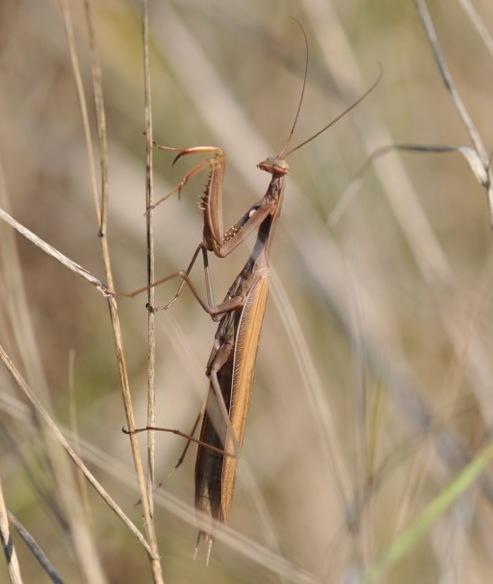Praying Mantis
Recognise!
Praying mantis can be easily recognized with their modified front legs used to grasp for preys. Males (only 4-6 cm) are smaller than females, which can grow up to 7,5 cm. The colour of praying mantis is either greenish or brownish, camouflaging them among plants.
Did you know?
During the last years praying mantis has been regularly observed in Luxembourg in the Minette region and the Moselle valley. Praying mantis prefer grassland with some bushes on warm places. They feed on insects like grasshoppers and even smaller mantis. Therefore often males don’t survive mating because they are eaten by their females. The 150 to 300 eggs are deposited in a frothy mass that hardens and protects them from heat and cold. The female lays the ootheca on plants or under stones. The eggs will pass wintertime in their ootheca. Larvae normally hatch end of may-beginning of June. They look like adults but are smaller and have no wings. Adult praying mantis are able to fly. The development from egg to adult mantis will take 3 months.
The name praying mantis refers to the fact that this insect often stands in a position that looks like a praying person.
